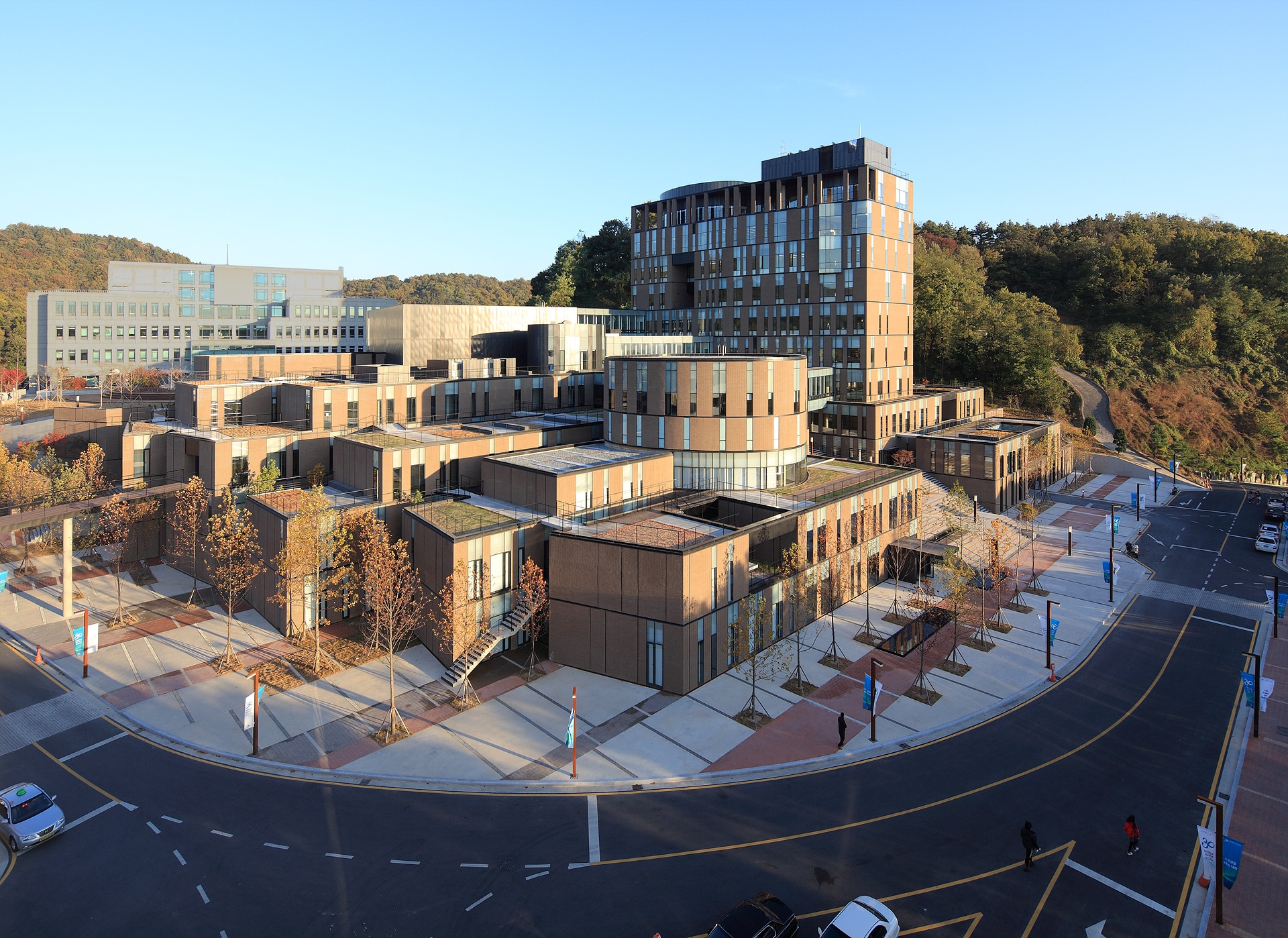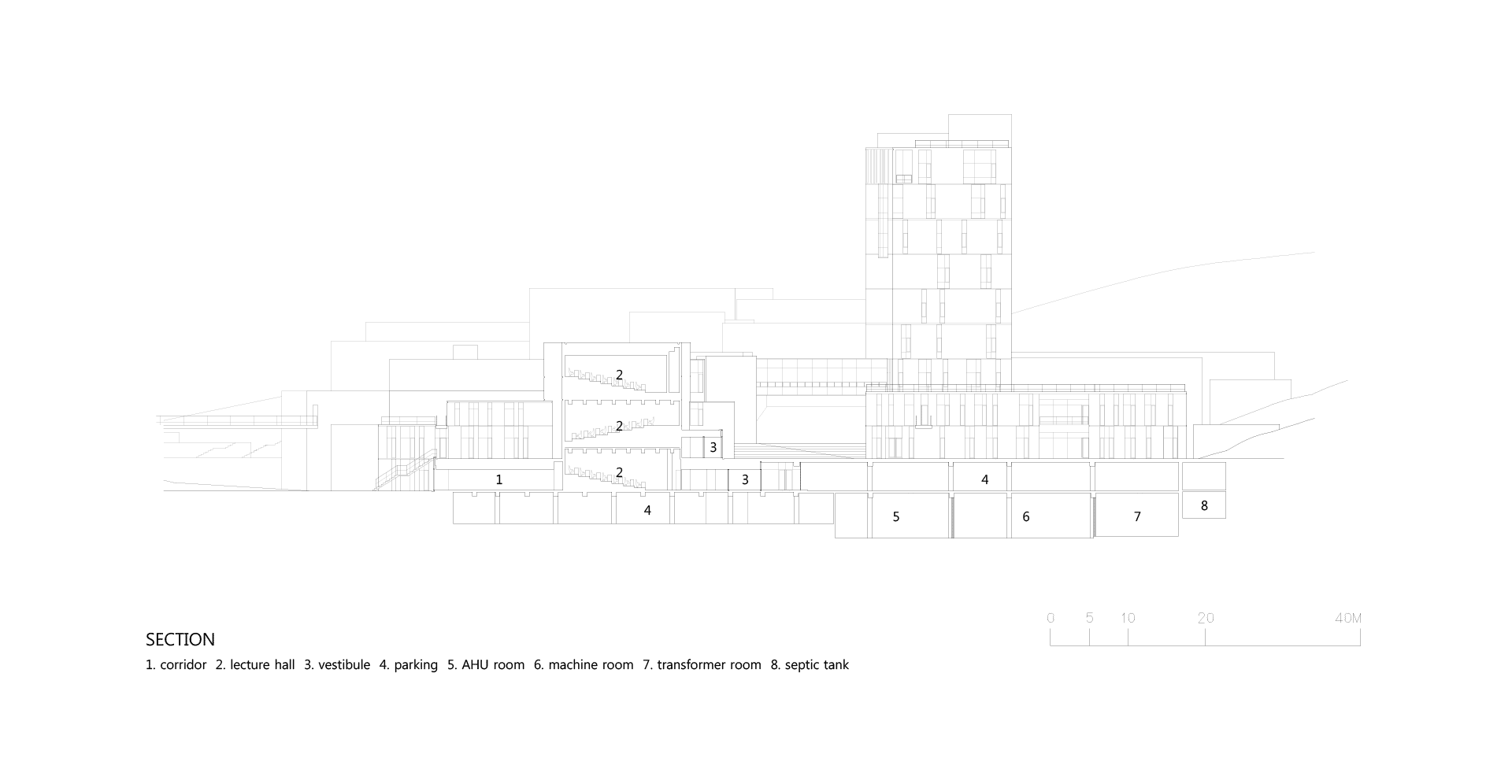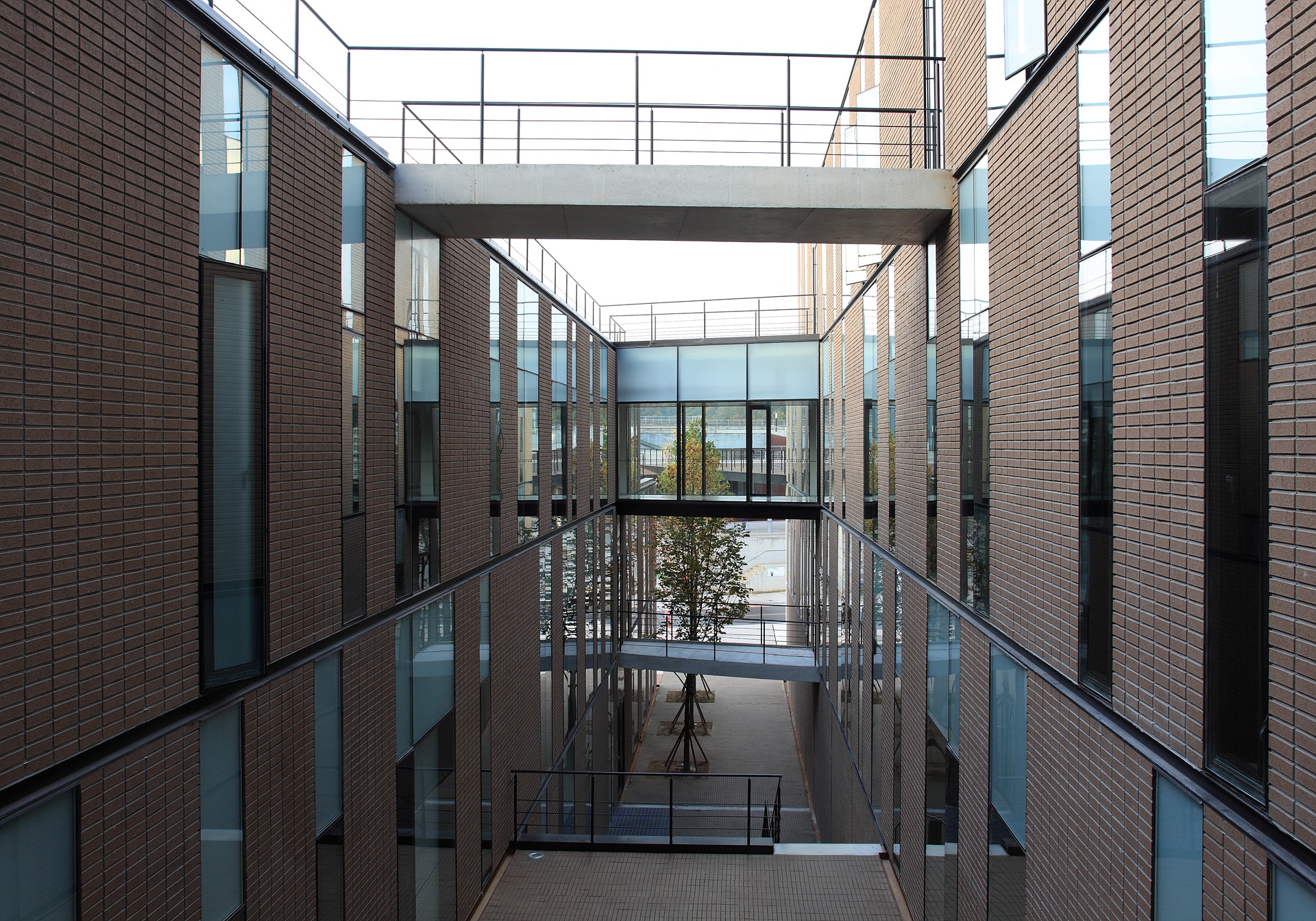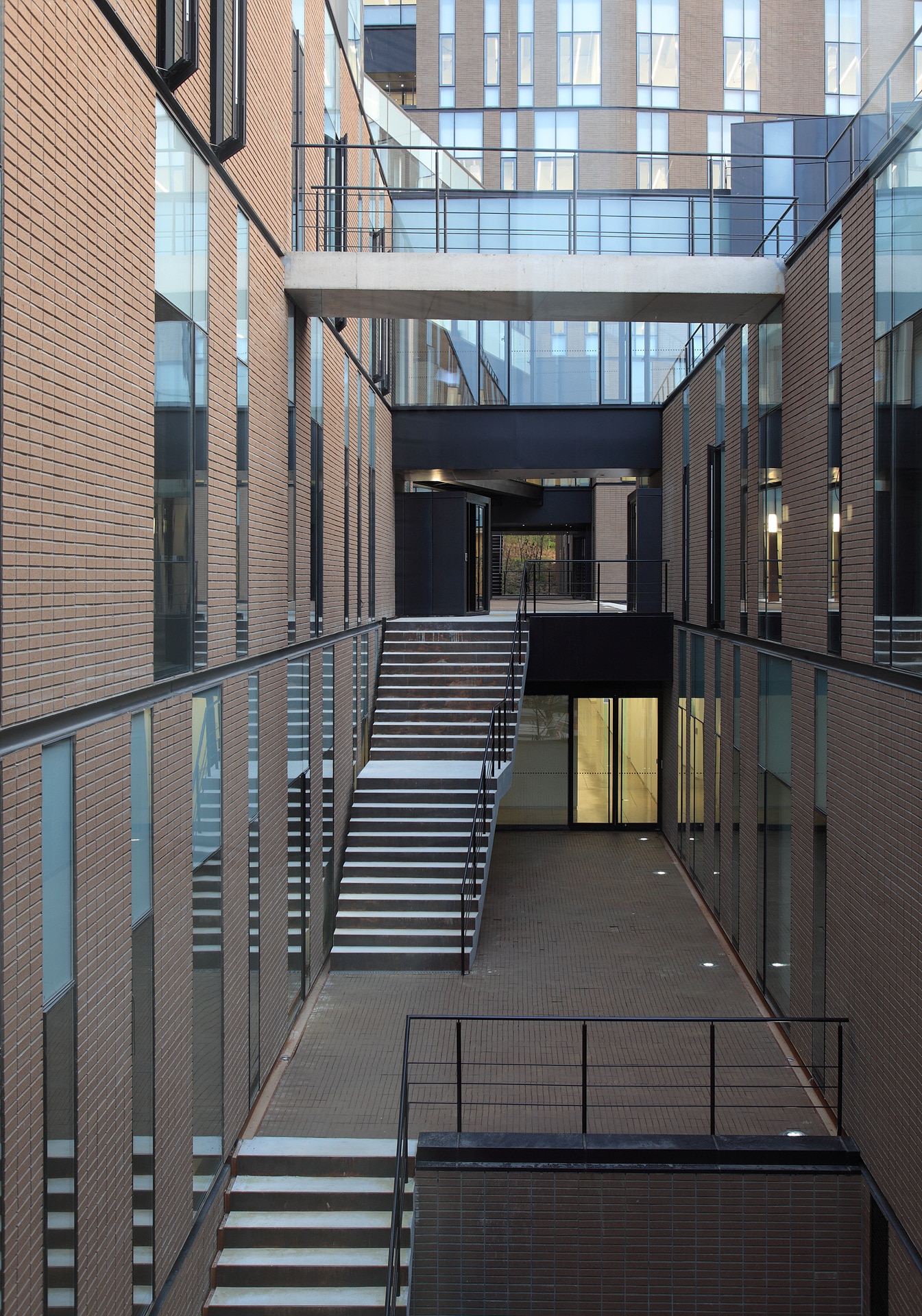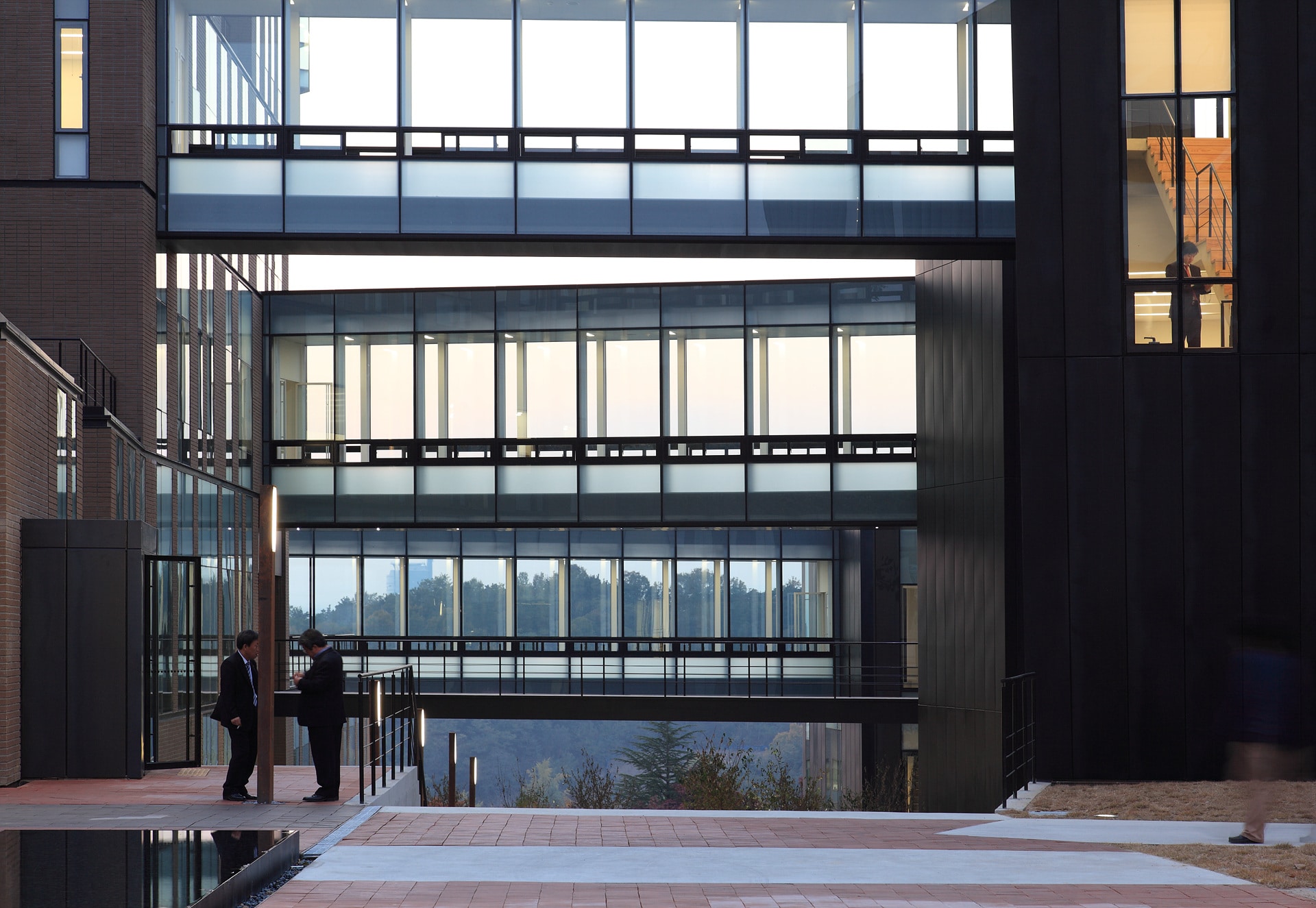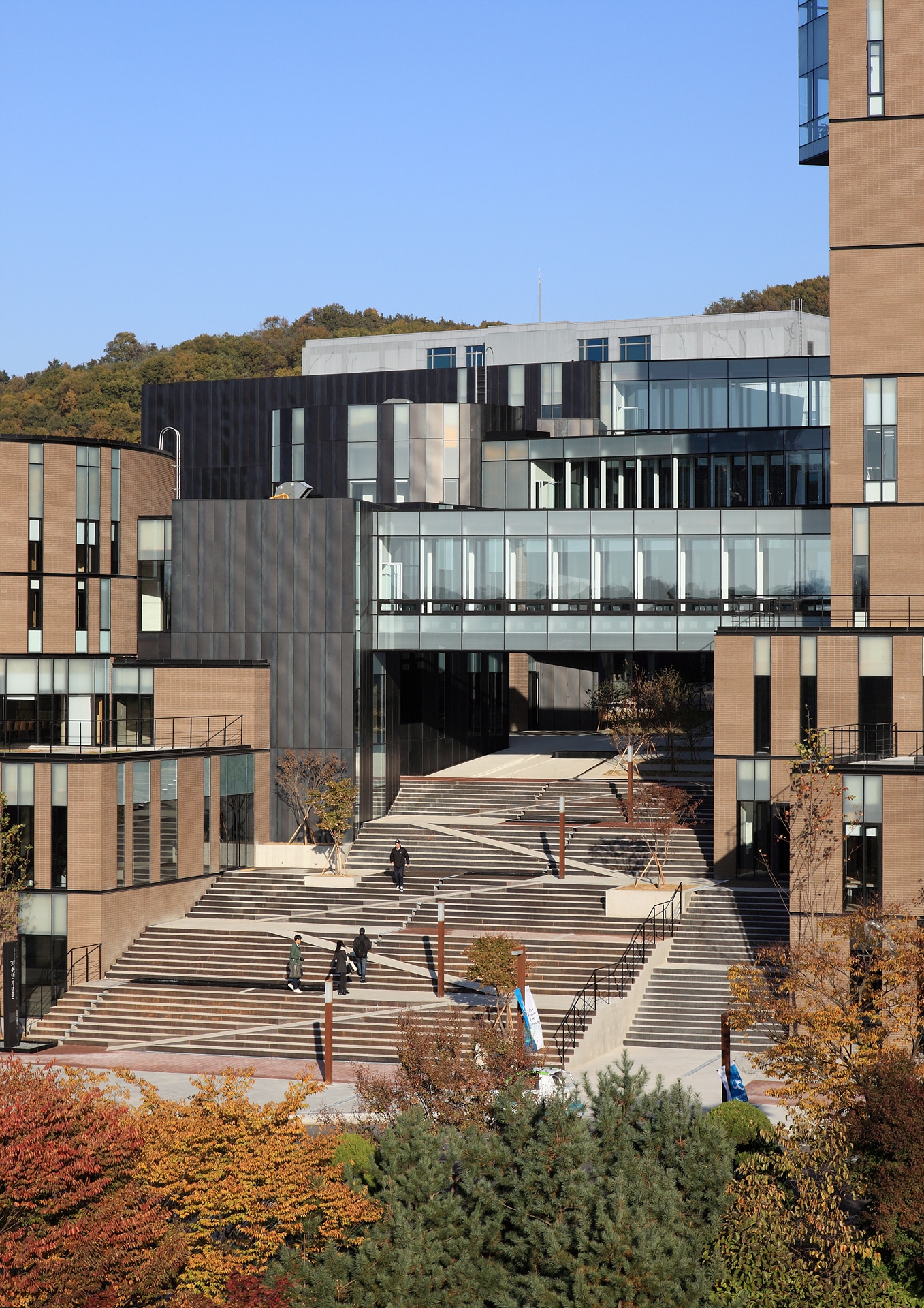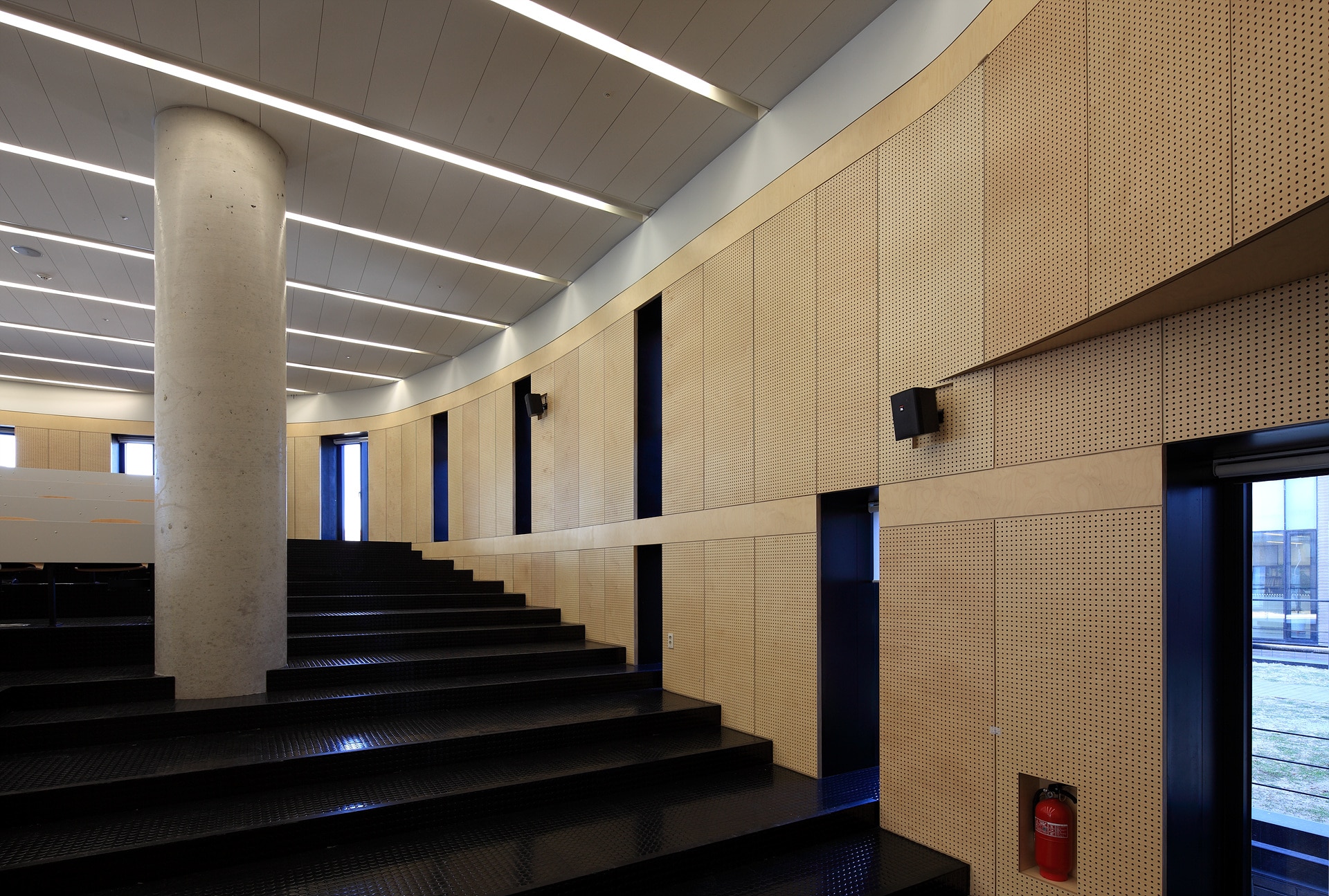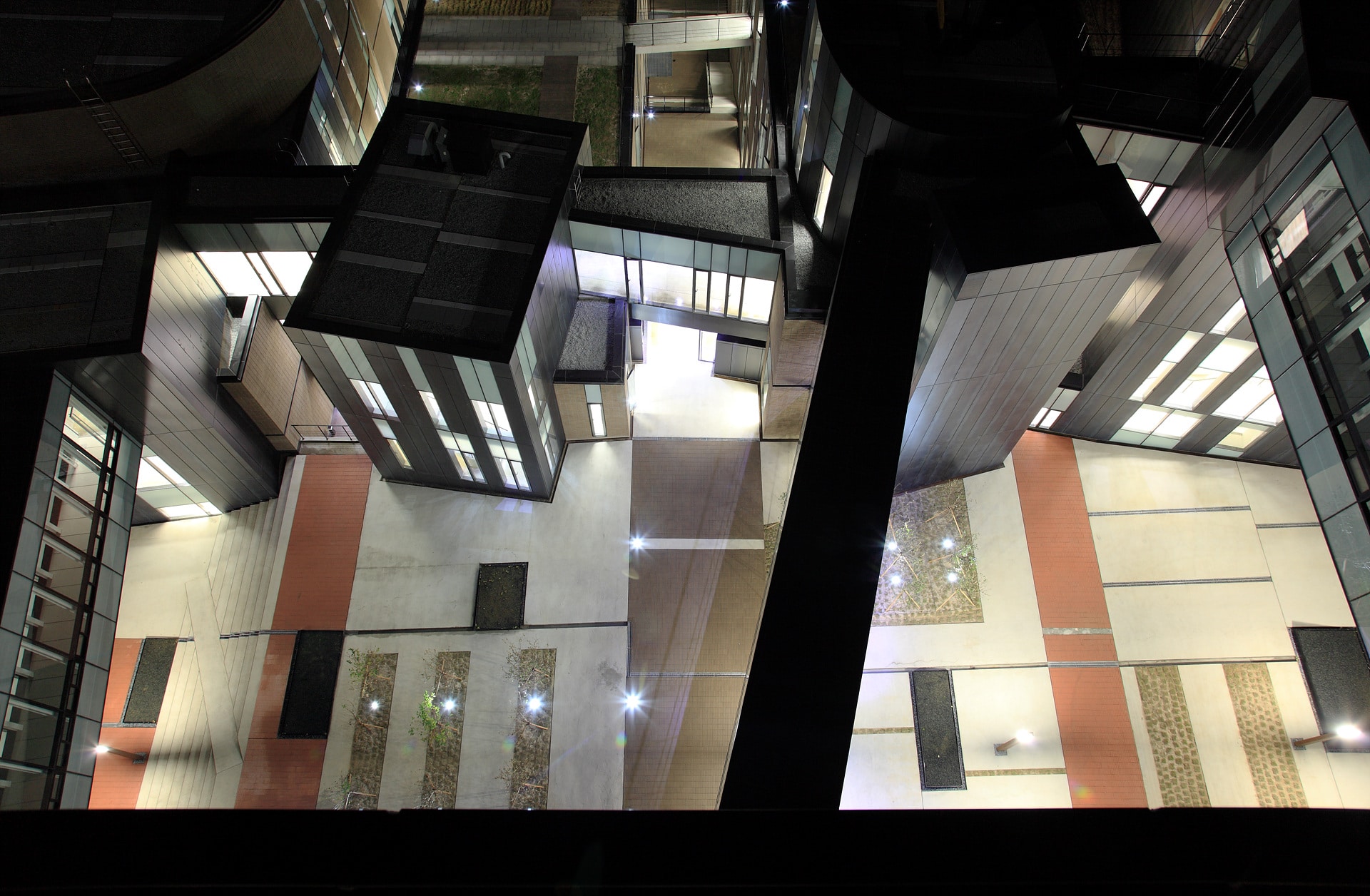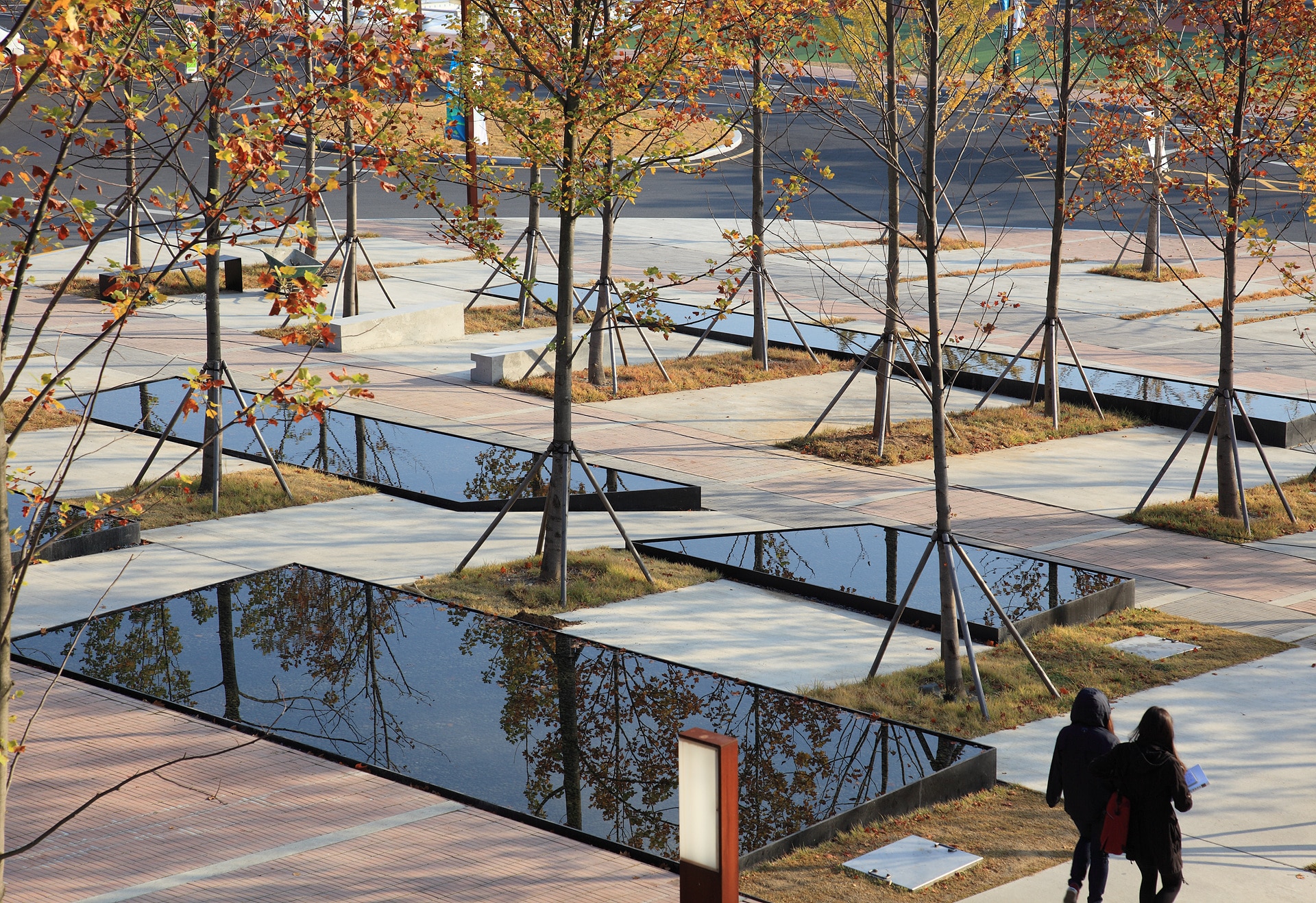30th Anniversary Memorial Building of Daejeon University
| 완공년도 | 2010 |
| 위치 | 대전 |
| 건축면적 | 6,493m² |
| 연면적 | 20,325m² |
| Structural engineer | 서울구조 |
| Mechanical engineer | 세아엔지니어링 |
| Electrical engineer | 대경전기 |
| Contractor | 삼양건설 |
| Lighting design | 뉴라이트 |
| 완공년도 | 2010 |
| 위치 | 대전 |
| 건축면적 | 6,493m² |
| 연면적 | 20,325m² |
| Structural engineer | 서울구조 |
| Mechanical engineer | 세아엔지니어링 |
| Electrical engineer | 대경전기 |
| Contractor | 삼양건설 |
| Lighting design | 뉴라이트 |
이 프로젝트는 대전대학교 마스터플랜의 정점에 해당되는 건축이다. 대지는 절개된 산 중턱에 위치하고 있었으며 마스터플랜에 의하면 서문으로부터 강력한 축을 형성시켜 이곳을 통해 남문으로 시작되는 보행전용 도로와 접속이 되어 잘만하면 뚜렷한 campus spine을 만들 수 있다고 즉각 느꼈다. 마스터플랜에 그려진 트윈타워는 이 땅이 요구하는 형식의 건축이 아니었다. 보편적 가치(universality)를 추구하는 대학의 본질에도 맞지 않았다. 나는 이 건축을 통해 지형을 회복하고자 하였다. 따라서 주어진 프로그램을 분석하여 여러 개의 단위조직을 만들어 이 매스들을 원래의 지형을 유추하면서 배열하였다. 그리고 마스터플랜에서 제시된 서문광장에서 시작되는 경사진입로를 건물의 내부로 끌어들여서 마치 계곡처럼 만들었다. 이 계곡은 이 건축의 가장 번잡한 장소가 되어 나뉘어 있는 두 부분들을 위와 아래에서 연결시킴으로써 대단히 다이내믹한 풍경을 이룬다. 사무동은 10층 높이로 올라 있지만 볼륨이 크지 않아 전체 조직을 위협할 수 없을 것이며 오히려 인접한 도서관의 큰 볼륨과 적절한 평형을 유지하며 주변의 안정을 이룬다. 건물의 옥상은 새로운 땅이며 분절된 매스 사이의 깊은 마당들과 끊임없이 연결된다. 간혹 둥글고 네모진 볼륨들이 옥상 위를 점거하게 되어 그 내부공간에 대한 호기심과 더러는 의혹을 야기시킬 것이다. 그렇지만 여기서도 건물의 형태는 결코 중요한 것이 아니며 우리의 잠재적 의지를 발동시켜 행동하게 하는 장소의 가치가 보다 중요하다. 물론 어떤 행위가 일어날지를 정확하게 예측할 수 없어도 지성과 낭만이 편만한 대학사회인 한 그 결과는 낙관해도 좋을 것이다. 그래서 나는 여기서 확정적 성격은 없지만 적절한 크기와 위치의 장소들을 구축하는 일에 몰두하였으며 그 집합이 이 건축이라고 말할 수 있다. 물론 이는 이 땅이 원한 것이라고 믿었다.
The completion of the 30th Anniversary Memorial Building marks the culmination of the campus development plan. The site was located in an artificially flattened area. Yet, according to the master plan, it seemed obvious that the site could function as a strong axis that led to the west gate and to the pedestrian way that starts from the south gate. Placed right behind the campus library, a well-defined campus spine could be created. The twin tower, described in the masterplan, was not a building in harmony with the terrain. Nor was it in line with the essence of universities which seek universality. It’s regarded also important matter to restore the deformed features of topography through architecture. Thus, the given program was analyzed, and several mass units were worked out and arranged according to the original topography. And also an access ramp suggested by the master plan which departs from the west gate was extended into the building. As the result, it looked like a man-made valley. This valley becomes the most crowded place of this architecture and a dynamic scene by linking the separate sections of the building at the top and at the bottom. Though the administration part is ten stories high, it does not look dominant against the surrounding buildings because its volume is not big. On the contrary, it contributes to harmony with the all surrounding buildings by keeping a balance with the big volume of the adjacent library. The rooftops become new land, and they are always in connection with yards between the separate mass units. Spherical and rectangular volumes occupying the rooftops may arouse curiosity or about the inside of them. Once again, the form itself means nothing. What matters is the inspiring space that motivates our will for action. Nobody knows what will happen next, nevertheless, the result would be positive as long as a romantic and academic university occupies the land. This belief made free arranging the mass units and spaces with unspecified characters, though they are of proper size and location. And the collective landscape may be said to be this architectural landscape. This should be what the land has longed for.
